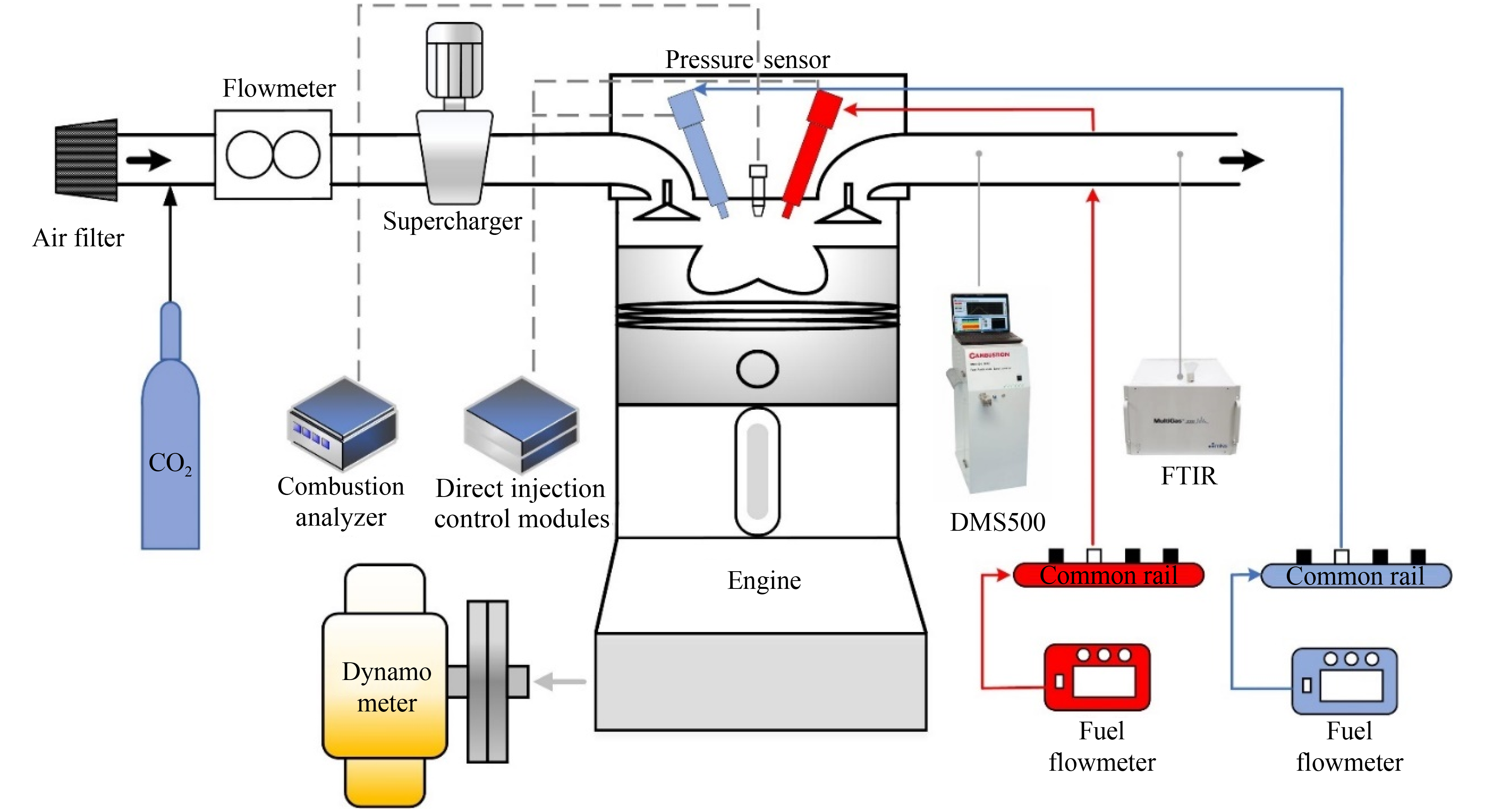Hanson et al. [
7] conducted experiments on a heavy-duty compression ignition engine using the 91 pump octane number gasoline. The results showed that the two injections in the compression stroke in combination with the 20% exhaust gas recirculation (EGR) ensured low NO
x and PM emissions while achieving an indicated thermal efficiency of about 47% at a 11 bar indicated mean effective pressure (IMEP). Kim et al. [
8] compared the spray and combustion of gasoline and diesel. The results showed that gasoline spray exhibited a shorter penetration length and a narrower spray angle than diesel spray under evaporation conditions, and gasoline combustion had a lower soot emission than diesel combustion. Ciatti and Subramanian [
9] investigated the effects of injection strategy, EGR, and injection pressure on combustion and emissions using 84 research octane number gasoline. The results indicated that gasoline operation had a comparable fuel efficiency with a lower NO
x emission than conventional diesel combustion, and the brake thermal efficiency (BTE) of gasoline combustion reached about 37% at a 12 bar brake mean effective pressure. Kalghatgi et al. [
10] successfully used gasoline on a multi-cylinder diesel engine without making any changes. The results indicated that compared to diesel fuel with similar NO
x levels, gasoline allowed engine operation with a lower smoke, a lower maximum pressure rise rate (MPRR), and a lower brake specific fuel consumption but with higher CO and THC emissions, and the BTE could reach about 39% at 10 bar IMEP. Delphi Corporation [
11] had upgraded the GDCI engine for three iterations. The third generation of the engine brought its BTE to 43.5%. All of these indicate that the GCI mode has a practical application potential.



















